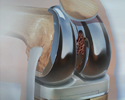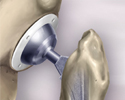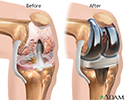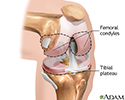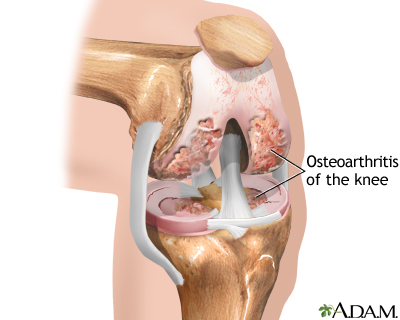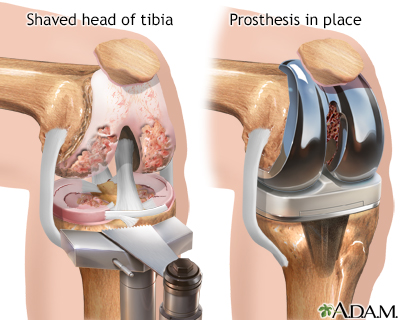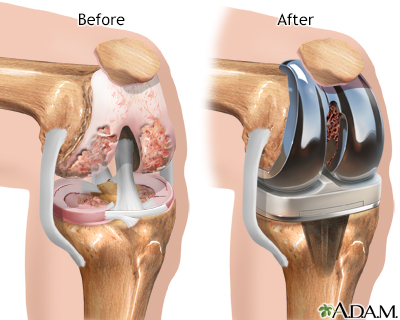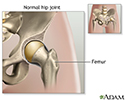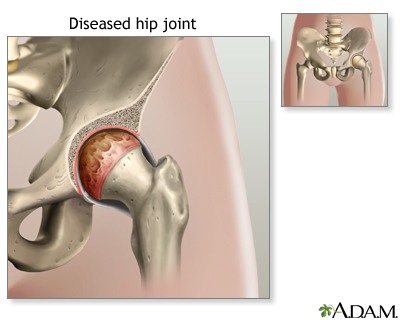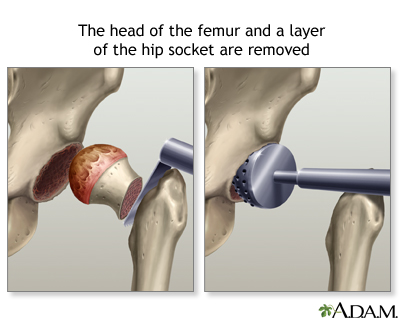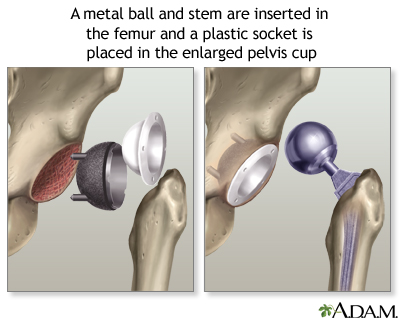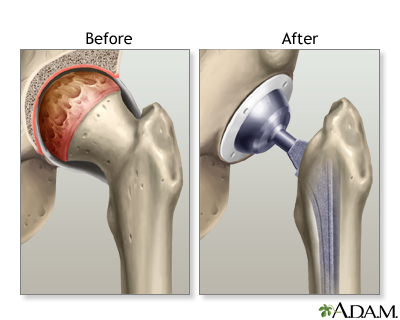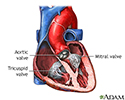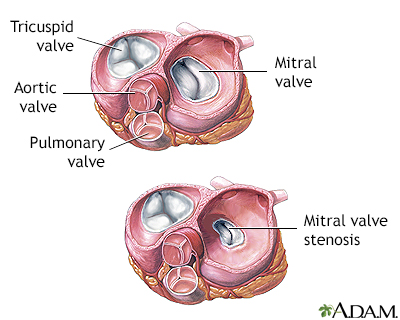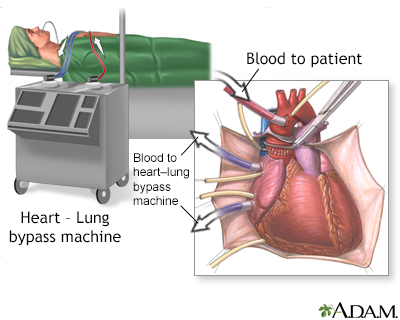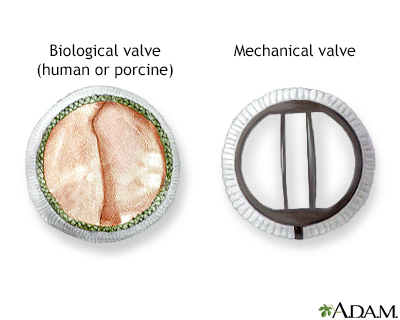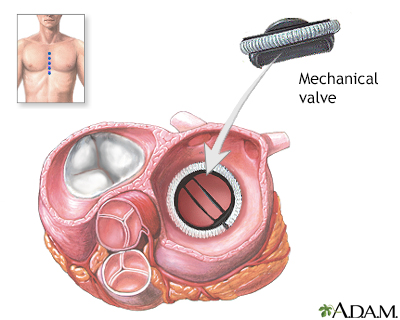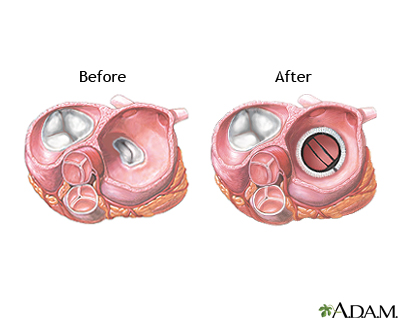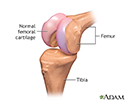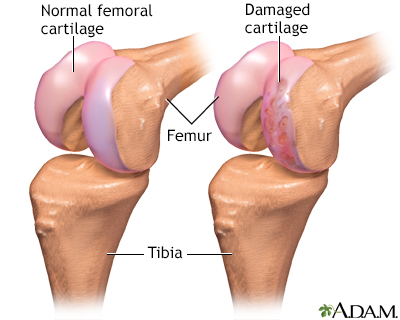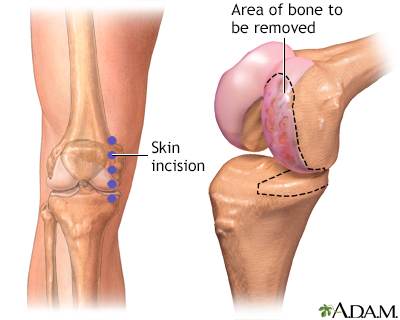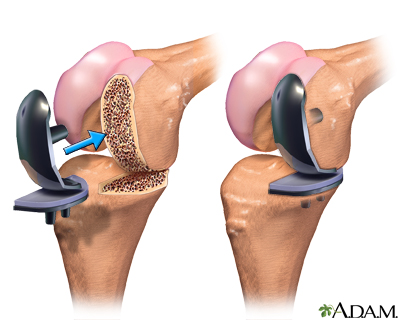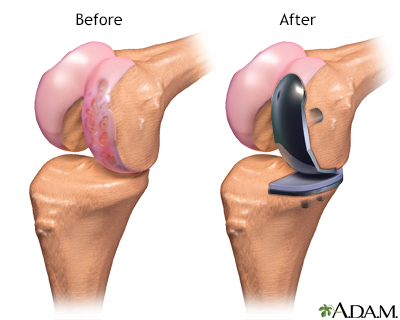Heart valve surgery
Valve replacement; Valve repair; Heart valve prosthesis; Mechanical valves; Prosthetic valvesHeart valve surgery is used to repair or replace diseased heart valves. Blood that flows between different chambers of your heart must flow through a heart valve. Blood that flows out of your heart into large arteries must also flow through a heart valve. These valves open up enough so that blood can flow through. They then close, keeping blood...
The Basics
Self Care
Knee joint replacement - Animation
Knee joint replacement
Animation
Hip joint replacement - Animation
Hip joint replacement
Animation
Knee joint replacement prosthesis
A prosthesis is a device designed to replace a missing part of the body, or to make a part of the body work better. The metal prosthetic device in knee joint replacement surgery replaces cartilage and bone which is damaged from disease or aging.
Knee joint replacement prosthesis
illustration
Knee joint replacement - series
Presentation
Hip joint replacement - series
Presentation
Heart valve surgery - series
Presentation
Partial knee replacement - series
Presentation
Knee joint replacement - Animation
Knee joint replacement
Animation
Hip joint replacement - Animation
Hip joint replacement
Animation
Knee joint replacement prosthesis
A prosthesis is a device designed to replace a missing part of the body, or to make a part of the body work better. The metal prosthetic device in knee joint replacement surgery replaces cartilage and bone which is damaged from disease or aging.
Knee joint replacement prosthesis
illustration
Knee joint replacement - series
Presentation
Hip joint replacement - series
Presentation
Heart valve surgery - series
Presentation
Partial knee replacement - series
Presentation
Heart valve surgery
Valve replacement; Valve repair; Heart valve prosthesis; Mechanical valves; Prosthetic valvesHeart valve surgery is used to repair or replace diseased heart valves. Blood that flows between different chambers of your heart must flow through a heart valve. Blood that flows out of your heart into large arteries must also flow through a heart valve. These valves open up enough so that blood can flow through. They then close, keeping blood...
The Basics
Self Care
Heart valve surgery
Valve replacement; Valve repair; Heart valve prosthesis; Mechanical valves; Prosthetic valvesHeart valve surgery is used to repair or replace diseased heart valves. Blood that flows between different chambers of your heart must flow through a heart valve. Blood that flows out of your heart into large arteries must also flow through a heart valve. These valves open up enough so that blood can flow through. They then close, keeping blood...
The Basics
Self Care
Review Date: 5/13/2024
Reviewed By: Mary C. Mancini, MD, PhD, Cardiothoracic Surgeon, Shreveport, LA. Review provided by VeriMed Healthcare Network. Also reviewed by David C. Dugdale, MD, Medical Director, Brenda Conaway, Editorial Director, and the A.D.A.M. Editorial team.

